
MIDI stands for Musical Instrument Digital Interface. A MIDI connection enables you to talk to Computer, Software, Keyboard and other Digital Instruments. Learn more about MIDI connections.
Introduction
I am sure you must have heard the word MIDI before. Those who are wondering what it means, here’s a simplified guide.
In short, MIDI allows musical instruments, digital devices and Computers to communicate with each other by sending binary data. All kind of information like notes, effects, volume can be exchanged with each other.
It is the way digital instruments communicate with each other. Let us see some of its uses.

MIDI 2.0 Released
MIDI 1.0 was released in 1983, and after 4 years, the version has got an upgrade. In MIDI 1.0, all data was in 7-bit values (musical parmaters like volume, pitch, etc could be set to a value of 0 to 127). In MIDI 2.0, data is set to 32-bit values.
Mike Kent, one of the technical leaders in creating MIDI 2.0, says this is like going from the resolution of a 1980s television to the high-def televisions of today. So, instead of just 128 steps for features like volume, you will now set the value to billions.
Producers are more excited about this development, epecially for subtle “pitch bend” (see the video below) and controlling how much bass and treble are emphasized in every note.
Various Uses
Control Other Digital Instruments
If you connect your electronic keyboard to one more electronic keyboard through MIDI, you can actually play the sounds from both the instrument.
What you need to do is designate one of the electronic keyboards as a Controller and set it to some sound, say piano. Connect the other Keyboard to the Controller keyboard and set it to some other sound, say strings.
Now, when you play some notes on the controller keyboard, it will send digital data to the other keyboard and you will actually hear both the sounds, piano as well as strings.
Play MIDI Files
You can download MIDI song files and play those songs using the sounds of your keyboard. The MIDI songs are written in such a way that your electronic keyboard reads the data and plays it back using the sounds of the instruments mentioned in the MIDI data. The MIDI songs also act as good teaching aid as you can follow the song note by note as it is being played on the keyboard.
Download Songs, Styles, Sounds
You can download additional MIDI sounds, styles or songs in your keyboard by downloading them from the internet.
The keyboard manufacturers keep on introducing new styles, sounds based on the current market trend and these can be used for a small charge.
Some keyboards can be connected directly to the internet without needing a Computer. This is the easiest way to download MIDI songs. Alternatively, you can download the songs on your computer and then copy the songs from your computer to the keyboard using a floppy disk or a CD.
Use MIDI Software
With MIDI Software, you can exploit the full power of your personal computer. You can use your computer (PC/Mac) for all your audio work, and for all music related learning. Here are some popular kinds of software.
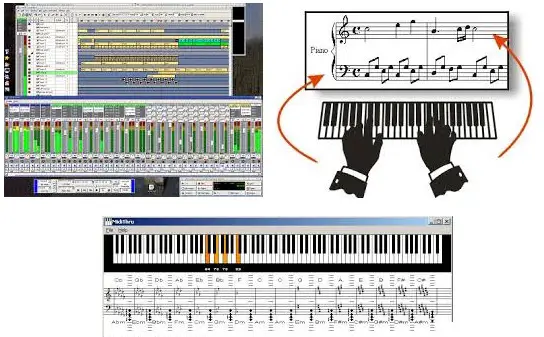
- Sequencers, plugins that let you record songs.
- Software to create notations for your compositions.
- Software that helps you learn to play a musical instrument.
These software are MIDI software (MIDI music software) because they understand the MIDI language and can communicate with digital instruments like your keyboard.
The Different Connection Slots Explained
In all the keyboards you will find slots marked as “M I D I – IN” and “M I D I – OUT” at the rear of the keyboard. Some keyboards also have the “M I D I – THRU” slot.
When you want to connect two instruments, you connect the MIDI OUT from one instrument to the MIDI IN of the other instrument. This way the first keyboard can send out MIDI messages to the other keyboard.
The MIDI THRU connection allows the incoming data to be passed to other external instruments.
Keyboard MIDI – OUT ==> Computer MIDI – IN
Computer MIDI – OUT ==> Keyboard MIDI – IN
Keyboard MIDI – Thru ==> same as the data coming in keyboard MIDI – IN
You can easily create and play, all by yourself, a very complex network of keyboards by using the MIDI THRU connection. You will need to use MIDI cables to do all this connections.
Please note that most of the recent keyboards / digital pianos offer connectivity to computer using USB instead of this traditional MIDI IN / OUT method. Connecting using USB is much easier and straight-forward.
Here are useful videos that explains the concept of MIDI in detail:
Transfer MIDI data to Your Computer: Various Ways
To be able to transfer data to your computer, you will need to connect your electronic keyboard / controller to the computer.
There are different ways to connect them. You will need to have at least one in place to be able to bring the data into your computer.
Use a Keyboard Controller
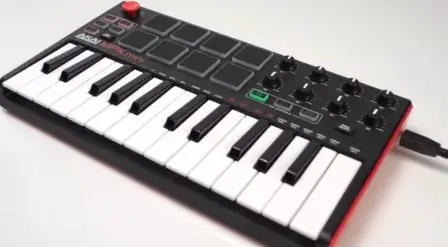 Some electronic keyboards come with built-in USB MIDI interfaces. You can just connect the USB cable from the keyboard to the computer, install drivers (if required) and you will be set up. The software will be able to detect your keyboard.
Some electronic keyboards come with built-in USB MIDI interfaces. You can just connect the USB cable from the keyboard to the computer, install drivers (if required) and you will be set up. The software will be able to detect your keyboard.
More on Keyboard Controllers here
Audio Interfaces/Soundcards
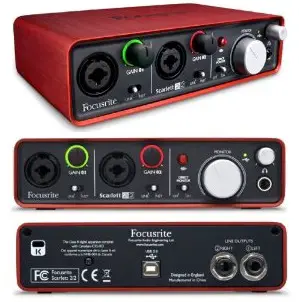 Most of the professional soundcards/audio interfaces nowadays have a built-in MIDI interface. You just need to connect your keyboard to the standard MIDI jacks on the interface using a midi-cable.
Most of the professional soundcards/audio interfaces nowadays have a built-in MIDI interface. You just need to connect your keyboard to the standard MIDI jacks on the interface using a midi-cable.
More on Audio Interfaces / Soundcards here
External USB MIDI Interfaces
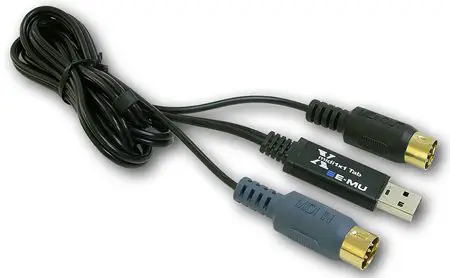 If the above options are not available to you, you have to purchase a separate USB MIDI Interface.
If the above options are not available to you, you have to purchase a separate USB MIDI Interface.
A USB MIDI Interface is a piece of hardware which has ports for both MIDI as well as USB.
You need to connect the interface to the computer using USB, and connect your keyboard to the interface using the standard MIDI jacks on the interface.
Generally the connections using these interfaces are more reliable than connecting through joystick ports.
More on External USB MIDI Interfaces here
Use the JOYSTICK port
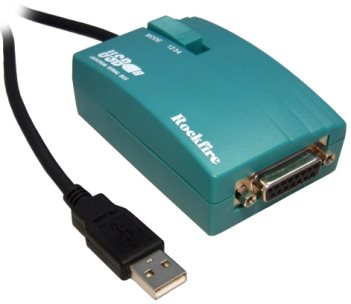 Another method to connect is to use the JOYSTICK port on your computer, especially for those with SoundBlaster type cards.
Another method to connect is to use the JOYSTICK port on your computer, especially for those with SoundBlaster type cards.
Though these tend to be less reliable than the other connections… you can try it out if you are just starting out in the computer music recording space.
What is MPE (MIDI Polyphonic Expression)?
“MPE” (short for “MIDI Polyphonic Expression”) can be considered as a significant development in the area of MIDI. While MPE uses MIDI as its core language, it drastically alters the way in which it sends midi data.
MPE is a specification developed jointly by a handful of companies including companies like Roli, Apple, MOOG and others, that allows synths and digital instruments to send more detailed note data to sound generators. This allows music makers to have more control over what the individual notes should sound like.
The fundamental difference between MPE and MIDI (that allows MPE to be more expressive than MIDI) is that MPE dedicates a channel for each individual note or voice an instrument is playing, instead of sending all the data on a single channel (in normal MIDI, channel-wide messages such as Pitch Bend are applied to all notes being played on a single MIDI Channel).
As a result, unlike normal MIDI, MPE creates opportunities for per-note modulation.
Basically, MPE allows devices to transmit more (more detailed) note data to compatible software suite (music production software) resulting in more natural and more expressive sounds.
MPE controllers
Here are the more popular MPE controllers that you can use for music making.
- ROLI Seaboard series
- ROLI Lightpad Block
- Linnstrument by Roger Linn
- Artiphon instrument by Artiphon
- Continuum Fingerboard by Haken Audio
- QuNexus by Keith McMillen Instruments
- Elgenharp by Elgenlabs
- Parva by Futuresonos.
Useful Links
KeytarHQ editorial team includes musicians who write and review products for pianists, keyboardists, guitarists & other musicians. KeytarHQ is the best online resource for information on keyboards, pianos, synths, keytars, guitars and music gear for musicians of all abilities, ages and interests.



Leave a Reply